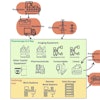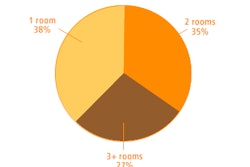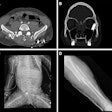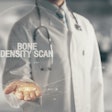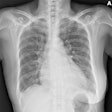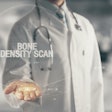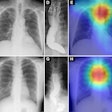Patients who have started osteoporosis therapy with bisphosphonate drugs do not need regular bone mineral density scans to monitor their progress, according to a new study published online in BMJ.
Some clinical guidelines recommend routine monitoring of bone mineral density in postmenopausal women, but such testing is expensive, and some experts question its ability to show how a patient is responding to treatment, according to authors from the U.S. and Australia.
To see if bone scans were necessary, the researchers analyzed data from the Fracture Intervention Trial (FIT), a randomized study that compared the effects of alendronate (Fosamax, Merck, Whitehouse Station, NJ) with placebo in more than 6,000 postmenopausal women with low bone mineral density. Bone density scans of the hip and spine were performed at the start of the study and then one, two, and three years later.
After three years of treatment, 97.5% of women treated with alendronate showed at least a modest increase in hip bone mineral density, the authors said. In addition, the treatment effect did not vary substantially between individuals, making it unnecessary to monitor individual response to treatment, they concluded.
Related Reading
Group urges rollback of DEXA cuts, April 13, 2009
More evidence for atherosclerosis and bone loss link, February 18, 2009
Alendronate can prevent glucocorticoid-related bone problems, December 2, 2008
Skinny teens warned about osteoporosis risk, February 2, 2007
BMD recovery after anorexia based on weight gain and menstrual function, August 23, 2006
Copyright © 2009 AuntMinnie.com



